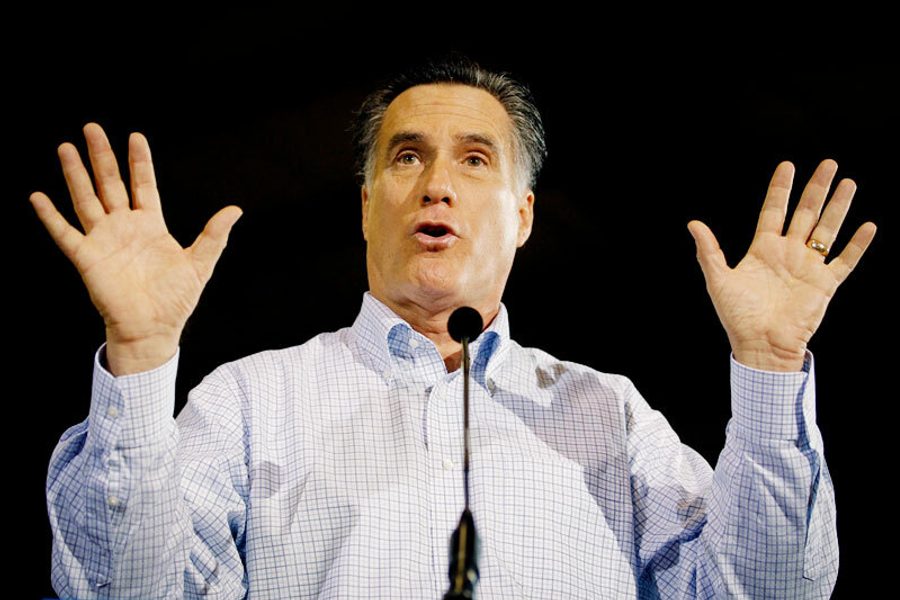Oprah’s Celebrity Pyramid Scheme
The daytime talk goddess’ therapeutic theology ultimately leads into a blind alley.
Chris Lehmann

The Age of Oprah came to an end not with a bang, but with a long series of celebrity purrs. Heartfelt testimonials poured in from Michael Jordan and Madonna. These were punctuated from the great Midwestern citadel of personal empowerment by awkward, Oscar-style invocations of the little people. Tom Hanks, the celebrity emcee, addressed her eminence thusly: “As you’ve said over and over again, ‘It’s all about them.’ “
However, the self-infatuated postmodern celebrity has difficulty acknowledging a “them,” let alone ceding the stage to that terrifyingly anonymous horde. So as the long wind-down of daytime TV’s most revered franchise unfolded, the assembled worthies were at a loss to say just what it was they were commemorating. Were the 19th-century Scottish essayist Thomas Carlyle around to sum up the spirit of our age, he might dub the lapsed Oprah franchise the hollow center of the fame-feeling nexus.
Certainly, the weirdly antiseptic displays of celebrity emotion priming the nearly weeklong farewell ceremony seemed calculated to remind viewers of the crushingly obvious: that Oprah Winfrey is a mega-celebrity, with many mega-celebrity acquaintances. Tom Cruise called his primetime confessor a close personal friend who “just happens to have a classroom of millions.” He aptly likened her to the Land of Oz’s Glinda the Good Witch – one of the original founts of undifferentiated sentimentality of our mass entertainment age.
Hanks, a more well-spoken gent, was reduced to banalities such as “25 years have come and gone so fast,” and (quoting English playwright Charles Morgan) “There is no surprise more magical than the surprise of being loved.” Former California First Lady Maria Shriver, who had recently learned of some bruising, unmagical kinds of surprises in her personal life, regaled Winfrey: “You’ve given me love, support, wisdom – and most of all, the truth.”
The truth of Oprah is that the self embodies the height of cosmic wisdom. Beyond the relentless solipsism distilled in Rhonda Byrne’s The Secret, in the claustral star theology of the Winfrey show there is no there there. Nor is there any suggestion that, from St. Augustine onward, great thinkers have posited rampant self-acceptance as a central problem of spiritual life – not its self-evident solution. Ultimately, that is why the grinding spectacle of Oprah’s farewell felt much more like an infomercial for feeling something, anything, rather than an actual outpouring of human emotion.
“We’ve learned from the Oprah show that we are enough, that we matter, that our lives have value,” former child star Dakota Fanning said. And “we” in the audience somehow were expected to accept that it’s the most natural thing in the world to affirm our existential worth by watching daytime TV.
Nowhere were these painful limitations of the Oprah-programmed life more evident than when the franchise namesake extended her reach into the world beyond television. Via Oprah’s Book Club, Winfrey could launch writers into bestsellerdom with a beneficent nod of approval; the publishing industry, indeed, has long regarded her as a far mightier deity than Glinda. But like a truly jealous god, Oprah could just as swiftly exile writers into the tundra of public hostility, as Jonathan Franzen learned to his distress. The hurt and aggrieved self has clearly served as the lodestone for Oprah’s literary judgment – the point, fittingly enough, that Franzen was trying to make in his derided 2001 remarks that Oprah’s taste tended toward the “schmaltzy” and “one-dimensional.” Once again, we in the Winfrey audience were taught that books not devoted to self-healing aren’t worth bothering with.
The curious thing about Winfreyism, though, is that it leads ultimately into a blind alley, as therapeutic theologies of the self always will. In her ballyhooed final segment – a one-on-one session that allowed the great teacher to relay one last set of life lessons to the faithful – Winfrey alighted on the hoariest of success aphorisms: the notion that through disciplined self-adoration, her audience, too, can achieve a state of celebrity divinity. This is, in essence, a vision of universal celebrity as a pyramid scheme.
“You have to make a living, I understand that,” Winfrey said to her followers in a tone of patient condescension. “But you also have to know what sparks the light in you, so that you in your own way can illuminate the world. … Each one of you has your own platform. Do not let the trappings here fool you. Mine is a stage in a studio; yours is wherever you are, with your own reach. … That is your talk show. That is where your power lies.”
To each true believer a talk show: This is a spiritual aspiration as hollow and nonsensical as Oprah’s closing benediction: “From you whose names I will never know, I have learned what love is.”
Mass adulation is not love, any more than pity is – or any more than enlightenment occurs on a couch opposite Tom Cruise. For these reasons, the most apt closing gloss on the Winfrey daytime brand came not from within the Harpo empire, but with the sad news at the end of Oprah’s final broadcast week that Gil Scott-Heron had died. The great songwriter’s signature composition – his claim to fame, as it were – was “The Revolution Will Not Be Televised.”








